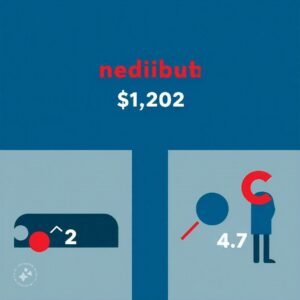Introduction
Insurance can seem like a complex maze, with terms like “deductibles,” “premiums,” and “coverage limits” complicating the picture. Yet, at the heart of most insurance policies lies the concept of a deductible—a key element that significantly affects your overall costs. This guide will help you understand deductibles, how they work, and their role in determining your insurance expenses.

What Is a Deductible in Insurance?
A deductible is the amount you agree to pay out-of-pocket before your insurance policy begins covering your expenses. It is a shared-cost mechanism that aligns the policyholder’s responsibility with that of the insurance provider.
For example, if your auto insurance policy has a $500 deductible and a repair costs $2,000, you would pay the first $500, and the insurer would cover the remaining $1,500.
How Deductibles Work Across Different Types of Insurance
- Healthcare Insurance Deductibles
Healthcare policies often have annual deductibles. Until this amount is met, you bear most of your medical costs, except for preventative services that may be covered regardless. - Auto Insurance Deductibles
Auto insurance typically includes deductibles for collision and comprehensive coverage. Adjusting your deductible can significantly alter your monthly premiums. - Homeowners Insurance Deductibles
In homeowners insurance, deductibles apply to claims for damages to your property, whether due to natural disasters or accidents.
The Relationship Between Deductibles and Premiums
A critical consideration in choosing a deductible is its inverse relationship with premiums. Higher deductibles usually translate to lower monthly premiums and vice versa. This tradeoff allows you to tailor your policy based on your financial situation and risk tolerance
Pros and Cons of High vs. Low Deductibles
- Advantages of High Deductibles
- Lower premiums
- Ideal for emergencies or catastrophic events
- Drawbacks of High Deductibles
- Higher out-of-pocket costs upfront
- May require substantial savings
- Advantages of Low Deductibles
- Reduced financial burden at the time of a claim
- Suitable for frequent users of insurance services
- Drawbacks of Low Deductibles
- Higher premiums that strain monthly budgets
How to Choose the Right Deductible
- Assess Your Financial Capacity
Evaluate how much you can afford to pay upfront in case of an emergency. - Understand Your Risk Tolerance
If you rarely use your insurance, opting for a higher deductible may save you money in the long run. - Compare Insurance Plans
Use online tools to see how deductible levels impact your premium costs.
Deductibles and Financial Planning
Deductibles are not just a technical insurance term—they directly impact your budgeting and financial security. Setting up an emergency fund to cover potential deductibles is a prudent step in financial planning.
Industry Trends in Deductibles
With rising healthcare and living costs, deductibles are trending higher across various insurance types. Many insurers are offering flexible or tiered deductible options, allowing greater customization for policyholders.
Conclusion
Understanding deductibles is essential for making informed insurance decisions. By carefully evaluating your financial situation, assessing risks, and exploring different deductible options, you can strike the right balance between affordability and comprehensive coverage.

